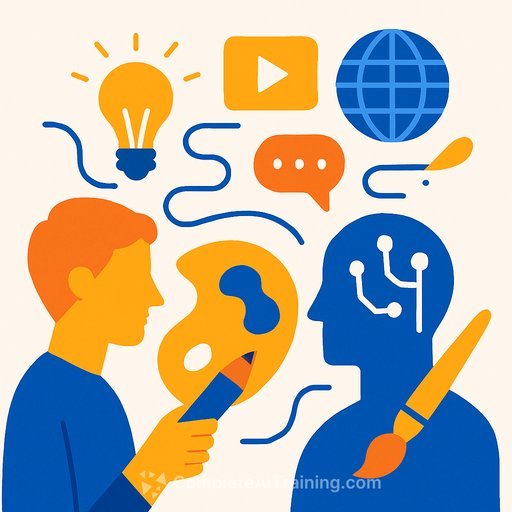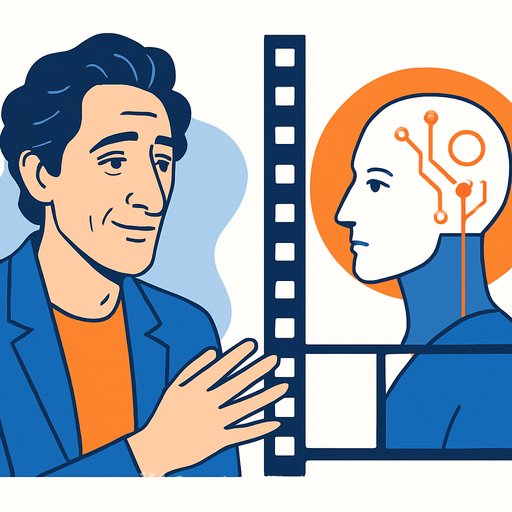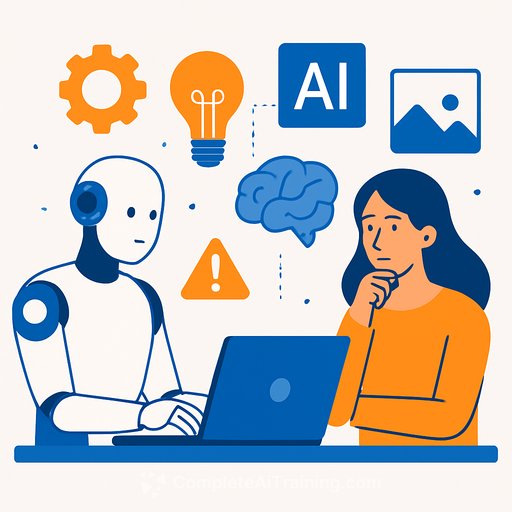AI in Creative Studios: Faster Starts, Higher Bars
If you've worked in a studio over the past two years, you've asked the same late-night questions. Should we use AI more? Will clients expect double the output for half the budget? Is this tech coming for our jobs?
The honest answer: it depends on where you use it. Studio leaders across the UK are seeing clear wins upstream and clear limits elsewhere. The throughline is simple-AI speeds the start, humans set the standard.
Speed without substance
The upstream impact is obvious. "Initial research, exploration, and concepting can now happen much faster," says Beth Andlaw, co-founder and communications director at FORM Brands Studio. Her caveat matters: treat it as a springboard, not the final deliverable.
One project proves the point. After a rebrand, a production team used the studio's direction to generate 30 stand concepts with AI. Some were off. Some were brilliant. Either way, it surfaced options that wouldn't have appeared through the usual process.
As Beth puts it, AI is "an accelerator and provocateur." It opens doors quickly so teams can align earlier and spend more time on story, craft, and emotion-the parts clients actually feel.
The authenticity signal
Speed introduces another problem: trust. "I've let the occasional typo slip into a deck," says Gabryel Shadbolt, senior strategist at Wildish & Co. Her follow-up line lands: "At least you know I didn't get AI to write it."
She predicts we'll soon use "artful mistakes" to signal a human voice in copy, the same way design fetishises hand-drawn roughs before the Illustrator pass. Even punctuation choices become tells. It's a strange new signal system-deliberate mess to prove someone cared.
If authenticity is a priority on your team, consider transparent provenance. Content credentials and asset tracing are gaining adoption for exactly this reason. See the Content Authenticity Initiative for practical steps.
A familiar pattern (without the hype)
"AI is a tool, not the beginning or the end of an idea," says Matteo Di Iorio, creative director at Interstate. Like the shift to computers, the internet, and Adobe, it expands how we work. It invites more play with language, strategy, and narrative-not just visuals.
His framing is useful: AI filters the noise so we can bring the extraordinary. But there's pressure hitching a ride. Clients are already asking how it makes delivery faster and cheaper. As Cat How of How&How notes, the demand signal is coming from them.
Not everyone agrees on speed gains, though. "So far it hasn't made anything faster, particularly," says Max Ottignon, co-founder of Ragged Edge. What it does do: open new ways to express ideas that were out of reach a few years ago. Stu Watson of Nomad keeps it even simpler: it helps teams get to concepts quicker-but it isn't writing the ideas.
What actually changes (and what doesn't)
Across studios, AI is slipping into everyday practice for idea generation, asset creation, and production. The final form is still in flux. The core skills aren't.
Judgement. Taste. Strategy. The ability to craft meaning and emotion. Those are still human responsibilities. The model can generate 100 options; it can't tell you which one matters.
Use it like this: a practical playbook for creative teams
- Upstream acceleration: Use AI for desk research, loose moodboards, and visual provocations. Timebox it. Then switch to craft.
- Concept breadth: Generate multiple routes early to align with clients faster. Kill weak ideas ruthlessly.
- Guardrails for voice: Set style rules for AI-assisted copy (tone, banned phrases, punctuation). Keep a human editor as the last mile.
- Authenticity by design: Decide when to keep human "texture" (sketches, phrasing, minor roughness) so the work feels lived-in, not synthetic.
- Client education: Be upfront-AI can widen exploration and speed production edges, but it doesn't replace strategic thinking or taste.
- Decision framework: Treat AI output like interns' drafts. Useful, never final. Criteria: relevance, originality, brand fit, emotional punch.
- Ethics and rights: Use licensed sources, track inputs, and document consent. Add content credentials where possible.
- Knowledge capture: Save prompts, process wins, and failures in a shared library. Make your studio's "prompt stack" a real asset.
- Production efficiency: Use AI for versioning, alt sizes, alt language, and accessibility checks-then QC with a human pass.
The bottom line
AI is making starts faster and conversations broader. It's not replacing the thing that makes the work great. The studios winning right now treat AI like a sharp tool: helpful in skilled hands, risky in lazy ones.
Keep your standards. Push your process. Let the machine run laps so you can focus on the parts only you can do.
Helpful resources
- AI courses by job for creative roles
- Curated tools for generative art to expand visual exploration
Your membership also unlocks:






